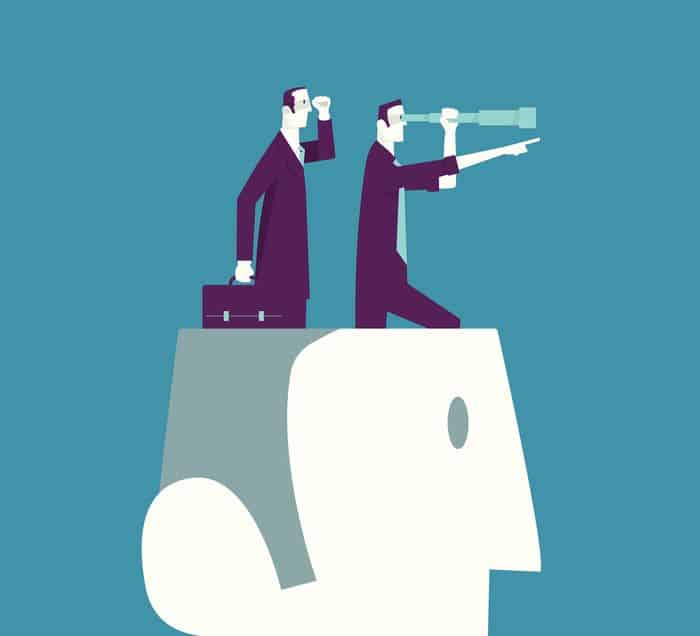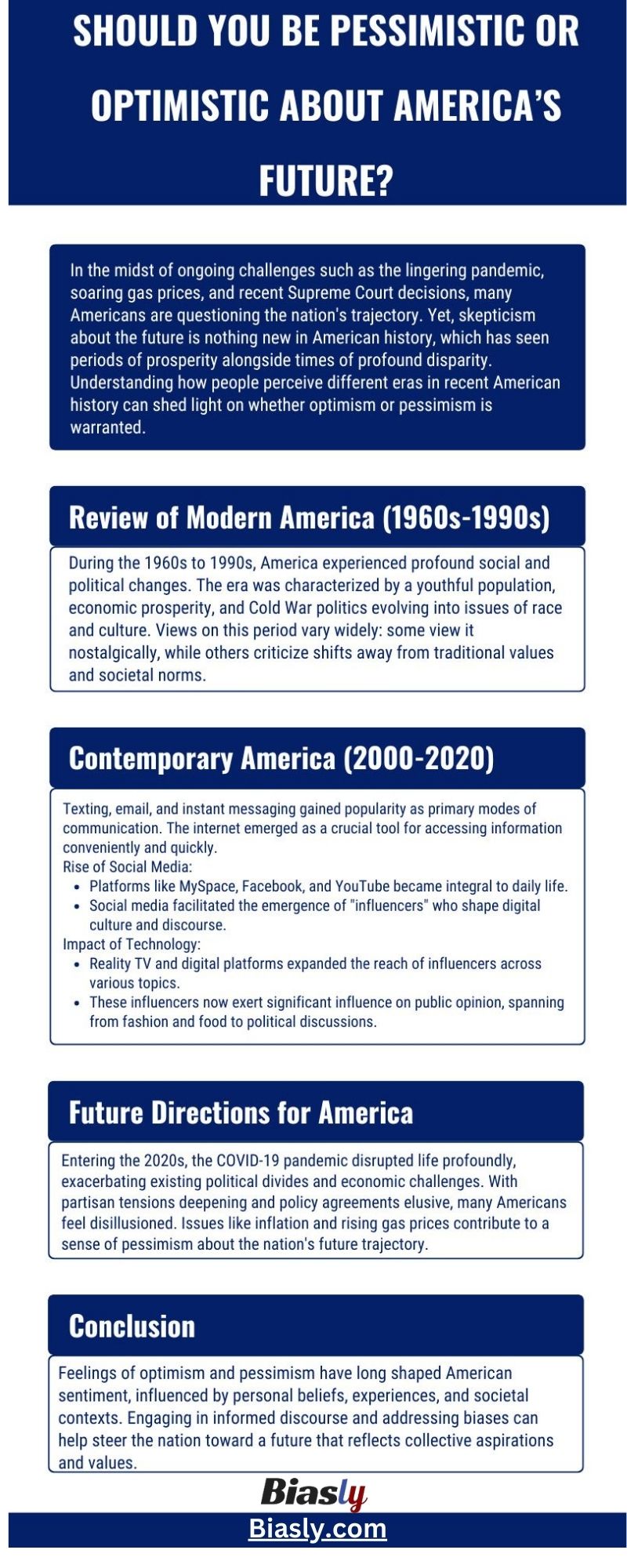
In times such as these–with the pandemic still holding firm, gas prices through the roof, and recent changes and decisions put out by the Supreme Court, it’s not hard for one to question where America is heading. However, the questioning of the future and perceived pessimism are nothing new for our country and our people. Throughout America’s tumultuous history, there have been eras of great prosperity as well as eras of disparity. Understanding the perspectives that people have about different periods in America’s recent history can help one decide whether or not they should be pessimistic or optimistic about the future of the country.
A Review of the Development of Modern America (1960s-1990s)
In M. J. Heale’s article for Reviews in American History, “The Sixties as History: A Review of the Political Historiography,” he explains that there are many different ways to look at and explain the climate of the sixties. It was an era shaped by a populous young population and unprecedented prosperity, and it was also a time dominated by the politics of the Cold War. Additionally, its politics which had been rooted in class and economics morphed into politics of race and economics, which made “the personal [become] the political, dissolving the distinction between politics and culture.” The time from the 60s through the 90s was a time of great social and political change, and different people had different ideas on what was beneficial for the country and what was not. In an article for Nautilus, Mike Mariani reports that the Public Religion Research Institute, a non-partisan group, published its annual American Values Survey before the 2016 election, and found that “51 percent of the population felt that the American way of life had changed for the worse since the 50s,” and that “7 in 10 likely Donald Trump voters felt the American society has gotten worse” since this time.
Many Americans look back at this time with nostalgia. And, they may be dismayed by the current movement away from religious values and standards, the increasing melting pot of American culture, a non-christian/traditional viewpoint to sexuality, and the “breakdown” of the family, and they believe that America’s values have frayed. Others find the social progress of this era as a positive step in the right direction for equity and equality.
What We’ve Seen in Contemporary America (2000-2020)
The 21st Century in the minds of many Americans began with the 9/11 Terrorist Attacks and the Reality TV age. The early 2000s became, for many, a time of great pessimism. 9/11 left most Americans fearful for their safety, which helped bring forward a widespread, latent push for national security. Immediate post-9/11 patriotism and nationalistic ideals were curated into popular support for the wars in the Middle East. As the first decade of the new century progressed, America’s financial situation became turbulent. In a special section for the National Council for the Social Studies, economics Professor, James D. Gwartney and doctoral student, Joseph Connors, write that “The headlines of 2008 were dominated by falling housing prices, rising default and foreclosure rates, failure of large investment banks, and huge bailouts arranged by both the Federal Reserve and the U.S. Treasury”, Americans growing financial hardships left them feeling disappointed, stressed, and unsure of what was to come. Much of the feelings of fear that were awakened early in the 2000s remerged around the election of President Barack Obama in 2008. The 2010s continued the pattern of fear and worry that took root in many Americans. Obama Era policies, like Obamacare and the Legalization of Gay marriage in 2015 left many liberals feeling like something was finally going right, but many conservatives felt that the America they knew and loved was dissolving. This feeling, in addition to the shared fears and lack of satisfaction with policies enacted by the democratic party, helped Donald Trump as President in 2016.
Technology’s rapid evolution also has impacted the way people look at this period of time. Texting, email, and instant messaging became popular ways of communicating. The internet became an important convenient means of providing people with access to information in a way that had never been seen before. Social media websites like MySpace, Facebook, and YouTube took root and, with reality TV, helped pave the way for the “social media influencers” who now seem to dominate digital culture and give their two cents on topics that can range from clothes to food, to politics.
Where America is Headed into the Future
With the start of the new decade, also came the COVID-19 pandemic, which uprooted American life (as well as the rest of the world) in unprecedented ways. As Ross Douthat writes in his opinion essay, “The Year of American Disappointment,” if the first year of the 2020s “was a year of crisis that seemed to open, briefly into a more hopeful American future, 2021 was a year of closed doors, downward tugs, and steady disappointment.” With an increasingly partisan and ideological divide between the Democratic and Republican political parties, it has become harder for leaders to reach agreements on policies that would help the whole American population. Die-hard Donald Trump fans clash with other members of the Republican party and with the Democrats. Independent “Democratic Socialists” like Senator Bernie Sanders from Vermont disagree with other liberals on social and economic policy that can help the American people emerge from this pandemic stronger. While some rejoiced at a Joe Biden victory, others feared that the left was plotting to ruin America with his party’s climate, social, and economic policies.
Instead, 2022 seems to be leaving all of America with a sense of hopelessness. While COVID’s presence has seemingly decreased this year, it seems to have become something akin to the flu. Inflation is on the rise, gas prices have sky-rocketed, and some of the “COVID era’s general anti-social trends (reckless driving, violent crime, drug overdoses) have become…long term feature[s] of our national life.” It’s not possible to see where the rest of the decade will take us, but with conservative enthusiasm for the overturning of Roe v. Wade and the left’s festering anger over right-wing policies and their own lack of political action, as well as the negative economic trends, Americans might be in for a politically turbulent decade.
Feelings of both optimism and pessimism are prevalent in American sentiment throughout its history. One’s personal feelings of pessimism and/or optimism can vary depending on their own personal politics, surroundings, and life experiences. Different demographics have different definitions of what a “bright future” for America would be. Now, more people than ever can be engaged in the political sphere–staying well informed is the first step in making sure that America moves in the right direction. Being well informed, and attempting to rid oneself of biases can help tackle the root of actual problems in America and can create a push of much-needed optimism to help propel our country into a future that we all can be proud of.























